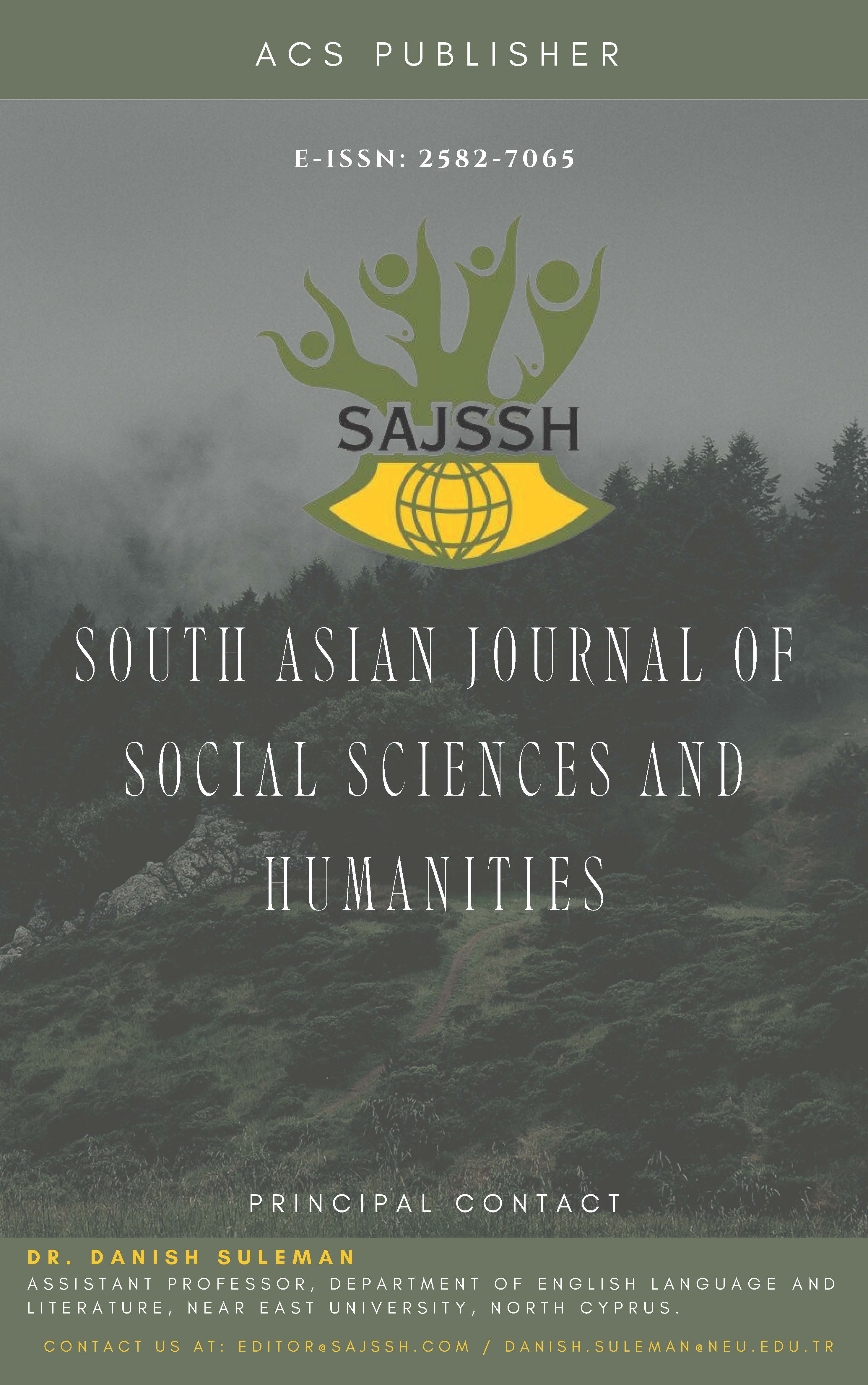University Enrollment and Graduate Trends: Basis for Long-Term Development Plan
DOI:
https://doi.org/10.48165/sajssh.2024.6503Keywords:
Enrollment, Graduates, Trend, Graduate, Undergraduate, UniversityAbstract
Data on university enrollment and graduates helps determine the demand and effectiveness of programs offered. It will serve as a basis for planning, resource allocation, and strategic development. The study examined the enrollment and graduation trends at Cotabato State University. In particular, the enrollment and graduation trends of Cotabato State University for Academic Years 2018-2019 to 2024–2025, according to levels. The study employed a descriptive research method and documentary analysis. The study reveals that the total enrollment decreased from AY 2018-2019 to AY 2019-2020, following the same pattern as undergraduate enrollment. From 15,085 students in AY 2022-2023 to 21,224 students in AY 2023-2024, enrollment increased significantly. As of AY 2024-2025, the number of students enrolled is the highest, at 24,835. The enrollment trend initially declined, particularly in AY 2019-2020, with a significant 17.8% decrease compared to AY 2018-2019. In the following years, however, there were fluctuations, with AY 2020-2021 reporting an increase of 15.0%, AY 2022-2023 reporting an increase of 9.1%, and AY 2021-2022 reporting a decrease of 11.2%. In addition, during AY 2023-2024, there was a substantial increase of 40.7%. Furthermore, in AY 2024-2025, there was also a 17.0% increase compared to AY 2023-2024. The number of undergraduate graduates shows more fluctuations, with a significant decrease between AY 2018-2019 and AY 2019-2020 from 1,862 to 1,097. Between AY 2019-2020 and AY 2022-2023, the numbers remain relatively stable, with significant increases in AY 2023- 2024 and AY 2024-2025. Overall, the number of graduates increased from 2,034 in AY 2018- 2019 to 2,634 in AY 2024-2025. As the years progressed, there was a gradual increase in AY 2019-2020, followed by a significant decrease in AY 2019-2020. According to these data, the graduate program appears to be growing, especially in AY 2023-2024. The undergraduate program has fluctuated but shown an increase in AY 2024-2025 compared to AY 2018-2019. AY 2019-2020 saw a significant decrease of 31.12%. There are also decreases in the following two years (AY 2020-2021 and AY 2021-2022), although at a slower pace. There was a slight increase in AY 2022-2023, followed by significant increases in AY 2023-2024 (36.62%) and AY 2024-2025 (43.23%). As a result of these data, it can be said that graduation rates dropped significantly at first, but then showed a strong rebound in the later years. It indicates a potential shift in trends or successful initiatives in AY 2023-2024 and AY 2024-2025.
References
Bautista, R. B., & Del Valle, J. (2023). Communicative competence and oral language usage of Filipino learners in English. International Journal of Educational Management and Development Studies, 4(1), 1–23.
Brad. (2024, March 13). The significance of increasing university enrollment: Unlocking opportunities for individuals and society.
Camhol, A. N. A. (2025). Beyond the mythical god label: Healing and multifunctionality in the 'bulul'. Philippine Studies: Historical and Ethnographic Viewpoints, 73(2), 137–167.
Chamilco, M., Pacheco, A., Peñaranda, C., Felix, E., & Ruiz, M. (2023). Materials and methods on digital enrollment system for educational institutions. Materials Today: Proceedings, 81, 718–722.
Clotfelter, C. T. (1991). Implications of recent enrollment trends. In Economic Challenges in Higher Education (pp. 124–140). University of Chicago Press.
Culla, C. C. (2020). The state of public policy research in the Philippines. Philippine Journal of Public Policy: Interdisciplinary Development Perspectives. https://cids.up.edu.ph/wp-content/uploads/2020/10/Policy-Insight_Culla.pdf
Egar, R., & Oliva, E. R. (2024). The mediating effect of student understanding in Filipino subject in the relationship between learning experience and communicative skills. Journal of Natural Language and Linguistics, 2(1), 163–172. https://doi.org/10.54536/jnll.v2i1.3801
Fabina, J., Hernandez, E. L., & McElrath, K. (2023). School enrollment in the United States: 2021. American Community Survey Reports. US Census Bureau.
Instructure. (2023). State of student success and experience report. https://www.instructure.com/resources/research-reports/2023-state-student-success-and-engagement-higher-education
Joaquin, J. J. B., Biana, H. T., & Dacela, M. A. (2020, October). The Philippine higher education sector in the time of COVID-19. In Frontiers in Education (Vol. 5, p. 576371). Frontiers Media SA. https://doi.org/10.3389/feduc.2020.576371
Kusonwattana, P., Prasetyo, Y. T., Ong, A. K. S., Castillo, A. M., Salonga, L. J., & Sia, J. A. (2022, December). Factors influencing intention to enroll in the online academic year among undergraduate students in the Philippines during the COVID-19 pandemic. In Proceedings of the 2022 6th International Conference on Software and e-Business (pp. 128–133).
Mekonnen Yimer, B., Herut, A. H., Demissie, M. M., Bareke, M. L., Agezew, B. H., Dedho, N. H., & Lebeta, M. F. (2024). Trends of higher education enrolment, graduation, and employment in Ethiopia: An empirical analysis. Cogent Education, 11(1), 2302623.
Paredes, A. (2023). Experimental science for the ‘Bananapocalypse’: Counter politics in the Plantationocene. Ethnos, 88(4), 837–863.
Patulin, E. P. (2023). Trend analysis of admission, enrollment and completion in SNSU graduate programs. International Journal of Multidisciplinary: Applied Business and Education Research, 4(2), 336–342.
Philippine Institute for Development Studies. (n.d.). The impact of the Free Tuition Law on college enrollment rates. https://www.pids.gov.ph/details/news/in-the-news/free-tuition-by-merit
Phinma Education. (2024). Annual report 2023–2024. https://www.phinma.com.ph/annual-report/
Ramos, M. C. M. (2024). Machine learning-based enrollment prediction for a higher education institution. Asia Pacific Journal of Management and Sustainable Development, 12(2), 15–29.
Roy, J., & Su, J. (2022). Trends in enrollment growth at public flagship universities. Urban Institute. https://www.urban.org/research/publication/trends-enrollment-growth-public-flagship-universities
Sanyal, B. C., Perfecto, W. S., & Arcelo, A. A. (1981). Higher education and the labour market in the Philippines. UNESCO Higher Education and Employment Case Studies. https://unesdoc.unesco.org/ark:/48223/pf0000077230
Trital, N. N., Kharel, S., & Acharya, B. (2023). A comprehensive analysis of students’ enrollment trends in tertiary education. Curriculum Development Journal, 31(45), 89–107.
Tuastomban, J. L. (2024). Teaching strategies and student participation in the classroom.
Downloads
Published
Issue
Section
License
Copyright (c) 2025 South Asian Journal of Social Sciences and Humanities

This work is licensed under a Creative Commons Attribution 4.0 International License.





